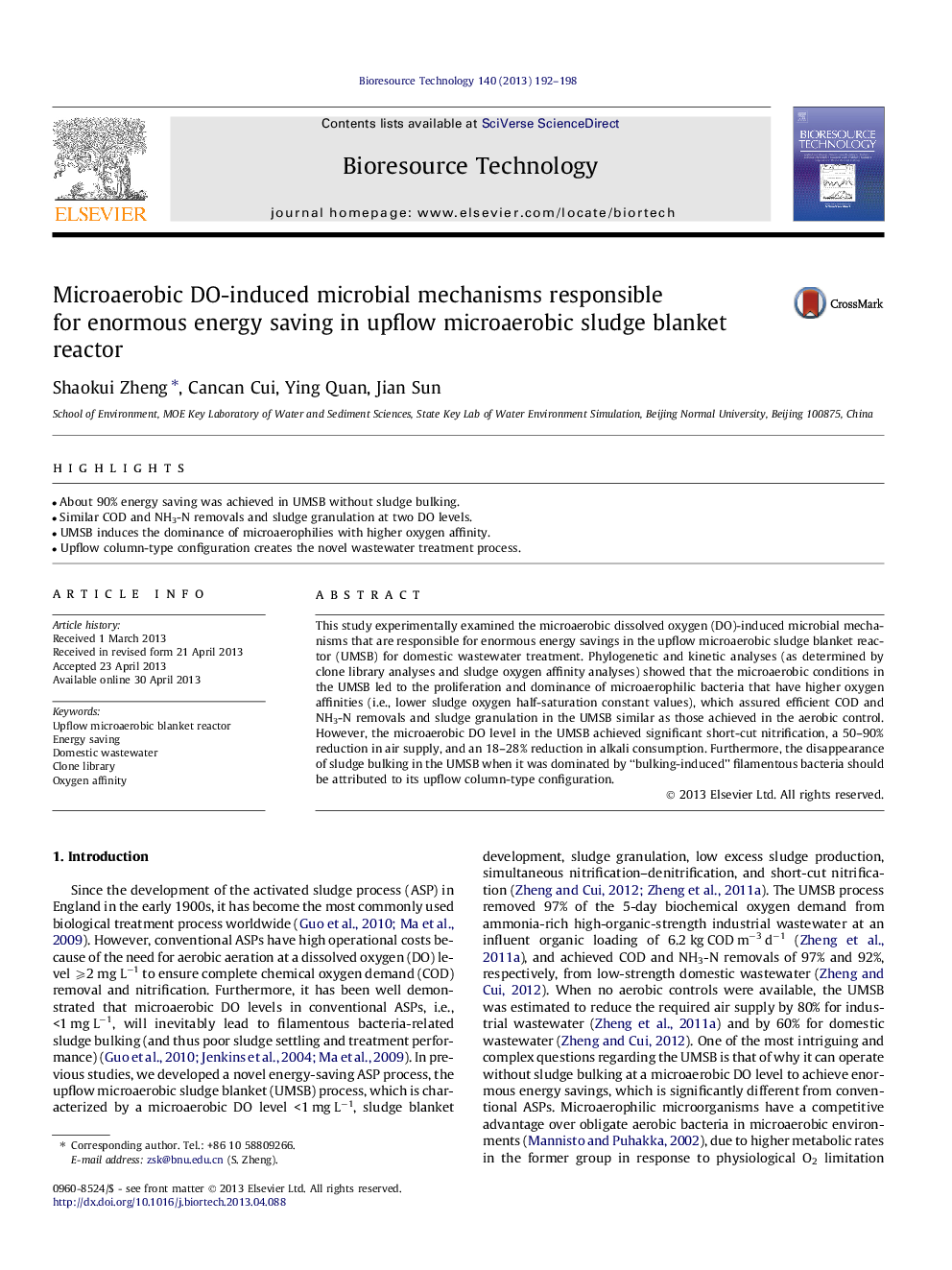| Article ID | Journal | Published Year | Pages | File Type |
|---|---|---|---|---|
| 7081987 | Bioresource Technology | 2013 | 7 Pages |
Abstract
This study experimentally examined the microaerobic dissolved oxygen (DO)-induced microbial mechanisms that are responsible for enormous energy savings in the upflow microaerobic sludge blanket reactor (UMSB) for domestic wastewater treatment. Phylogenetic and kinetic analyses (as determined by clone library analyses and sludge oxygen affinity analyses) showed that the microaerobic conditions in the UMSB led to the proliferation and dominance of microaerophilic bacteria that have higher oxygen affinities (i.e., lower sludge oxygen half-saturation constant values), which assured efficient COD and NH3-N removals and sludge granulation in the UMSB similar as those achieved in the aerobic control. However, the microaerobic DO level in the UMSB achieved significant short-cut nitrification, a 50-90% reduction in air supply, and an 18-28% reduction in alkali consumption. Furthermore, the disappearance of sludge bulking in the UMSB when it was dominated by “bulking-induced” filamentous bacteria should be attributed to its upflow column-type configuration.
Related Topics
Physical Sciences and Engineering
Chemical Engineering
Process Chemistry and Technology
Authors
Shaokui Zheng, Cancan Cui, Ying Quan, Jian Sun,
